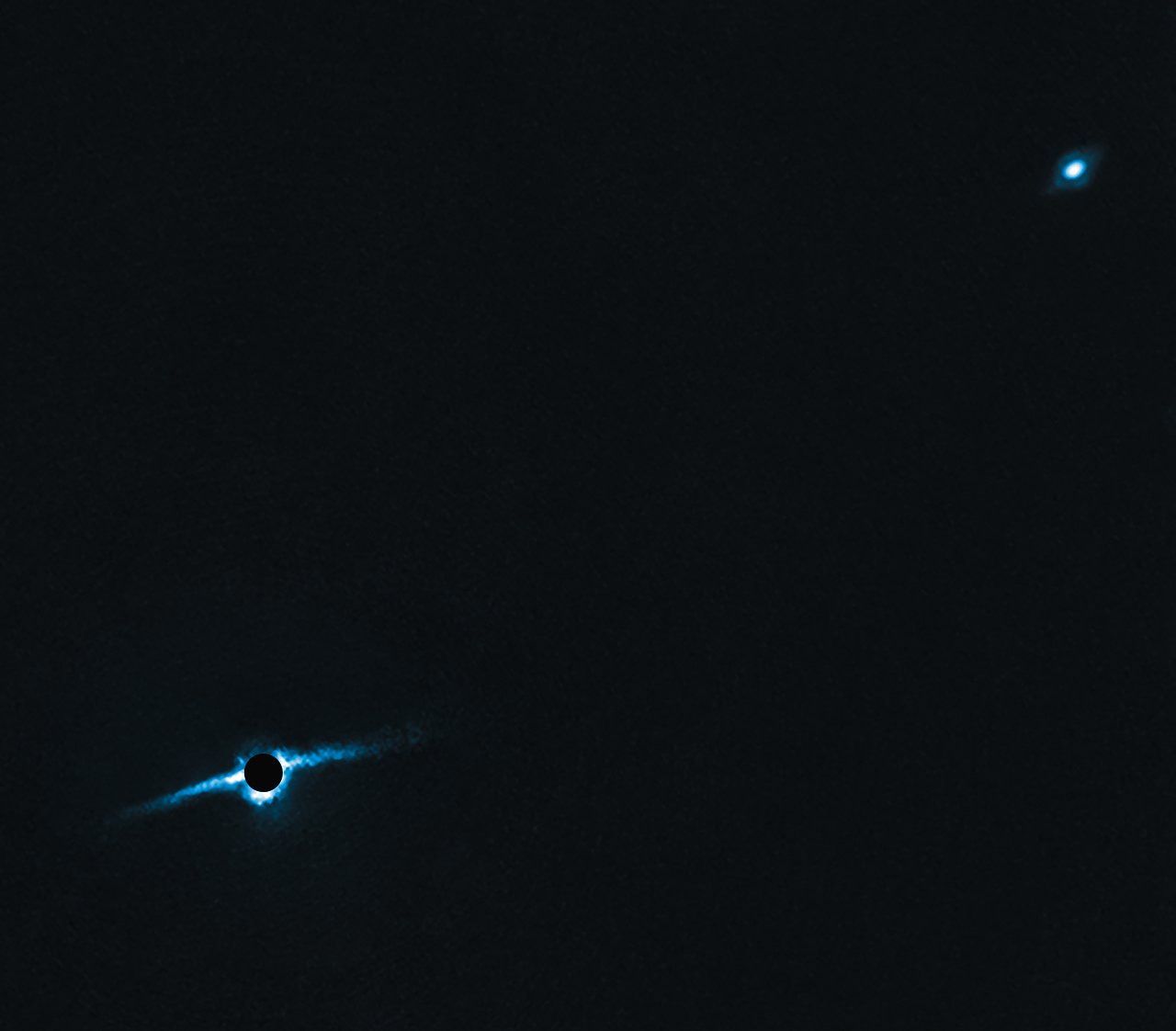If you've enjoyed this please share it on facebook, twitter, or whatever your favourite social media is.
Europa's ocean may reach its surface after all...
A study from CalTech, using the Keck telescope and an instrument called OSIRIS that can identify mineral on other worlds, may have turned up evidence that water from the ocean of Jupiter's moon Europa may leak onto it's surface. This is an encouraging finding for astrobiologists, who have wanted to be able to study material from that ocean's depths for a long time. The major problem with doing so is that Europa's ocean is covered in ice, maybe tens of km thick. However the CalTech study presents evidence that strange looking parts of the ice sheet called 'chaos terrain' may occasionally see water welling up from the surface, making it possible for a surface lander to sample water/ice from the ocean. This follows a possible sighting by the Hubble space telescope of a water geyser on Europa, back in late 2013.
 |
| Above: The chaos terrain of Europa, where water from the ocean may be breaking through the ice. Courtesy of NASA/JPL |
Private Moonshot teams team up
The Google Lunar X-prize is a race between private firms to see who can be the first to land a small rover on the Moon and perform some simple tasks: The winner gets a $20,000,000 prize, and there are various runner up prizes. The idea is to show that the principle of private lunar exploration - for scientific purposes or other wise - is doable. But getting to the Moon isn't an easy job, so some of the teams have made deals to share rockets - and teams AngelicvM and Haskuto have gone further: Both their rovers will share the same landing craft on the descent to the surface, as part of a three way partnership with a third team, Astrobotic, who are building the lander:
"Team AngelicvM shares our vision of uniting and inspiring individuals to look to the Moon as the next great destination for exploration and discovery. We are honoured to have great partners to join us on this historic journey that will pioneer a new era of lunar exploration for future generations," said John Thornton, CEO of Astrobotic.
"With the challenges facing our world today, it is comforting and humbling to see how a group of dreamers from all these different areas of the planet are joining forces to reach the moon together forgetting about cultural, physical and geographical differences, in order to reach their dreams, and show the world that there is still hope in humanity if we work together towards a common goal," said Mauricio Guerrero, the CEO of Team AngelicvM
 |
| Above: Artists impression of an X-Prize lander. Courtesy of Google. |
Disk of gas and dust seen around a binary star with an exoplanet
This is just an awesome picture, taken by the European Southern Observatory’s planet-finding instrument, SPHERE. Bottom left is the star binary star system HD 106906AB, which is showing off the disk of gas and dust that surrounds it - and in which new planets may still be forming. This is a double star system, so those worlds will one day have some spectacular sights. In the upper right is a huge gas giant exoplanet, still white hot from the heat of its birth. This giant is 11 times heavier than Jupiter,and would not have to be much heavier to start undergoing deuterium fusion and qualify as a brown dwarf sub-star.
 |
| Above: HD 106906AB, it's disk of gas and dust, and its huge planet. Courtesy of ESO. |
Does Pluto have an iron heart?
Following all the excitement of the discoveries at Pluto by new Horizons a lot of planetary geologists have been looking at alternate ways that Pluto's geology might work - after all the dwarf planet has turned out to be far, far more active than expected. One idea - the one that the paper explores -is that it has an iron core, more like Earth or Mercury than the ball of ice and rock that was expected. If the paper is on the money than this could explain some of Pluto's odder features, and would mean we'd need a huge rethink on how the icy worlds in the Kuiper belt formed.
 |
| Above: Artists impression of the surface of Pluto, with the moon Charon rising. |
A report from the International Space Station
I don't usually include these, but I may start paying more attention to them in future: Every week NASA publishes a report on what the crew of the ISS have been up to. One of the the things that strikes me on reading this one (I admit I've not read them for a couple of years now) is how much the crew are running and maintaining novel experiments that use microgravity to investigate both things that apply down here on Earth (how fuel burns for more efficient engines for example) as well as future space missions (like vibration dampers for spacecraft).
Above: JAXA's (Japan Aerospace Exploration Agency) Flame
Extinguishment Experiment (FLEX-2J) burns teeny droplets of fuel to examine how combustion works when gravity doesn't interfere. Data from this investigation may help
build less polluting engines. Image courtesy of NASA
A good question: Why does SETI search, and what if we are alone?
Paul Glister's blog, Centauri Dreams, is usually full of interesting - of sometimes fairly out there - ideas. This week has been no exception, and the title-linked article on Centauri Dreams has raised the question: What if we never do find any intelligent life?
This has all arisen out of the furore surrounding the mysterious dips in the light intensity around star KIC 8462852. Paul actually offered up a possible natural explanation for the dips earlier in the week, only to have it refuted by Jason Wright, one of the scientists involved in studying KIC 8462852. The star is continuing to provoke a lot of debate, and even though most astronomers still think a natural explanation will emerge none has yet been confirmed.
 |
| Above: Mystery star KIC 8462852 and its small companion star. Courtesy of Arxiv. |

No comments:
Post a Comment